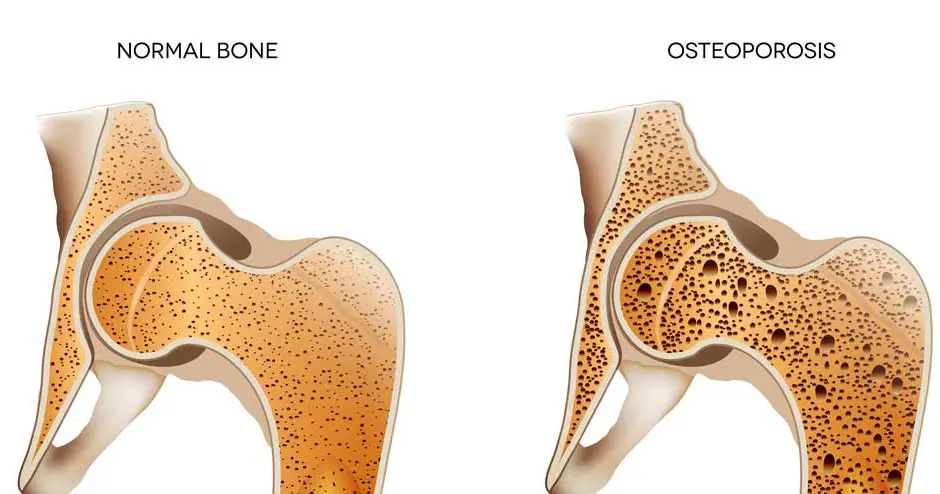Back and Joint Pain
What Is Osteoporosis?
Osteoporosis Verses Osteopenia, What’s The Difference?
Osteoporosis is a common disease affecting the skeletal system making the bone brittle. Brittle bones as a result of osteoporosis leads to an increased risk of suffering a fracture when compared to the fracture risk of normal bone. According to ‘Osteoporosis Australia’ over one million people in living in Australia have the disease. What is the cause? A thinner less dense bone structure associated with osteoporosis is the result of the bone losing minerals, whereby minerals such as calcium are lost at a rate faster than the body can replace them ultimately leading to a loss of bone thickness. When bones have this mineral loss and become more brittle then sometimes even a small and normally insignificant fall/bump/knock may result in a fracture, referred to as a low trauma fracture. Fractures occurred may also be more significant in severity when compared to fractures occurred in normal bone.
Osteopenia is a state of low bone density and is the area filling the gap between what is normal bone density and the disease osteoporosis. If you are diagnosed with osteopenia your doctor will look to take measures in an attempt to support your bone health and stop or slow any progression towards being diagnosed as having osteoporosis. Such actions may include vitamin D and calcium supplementation, accompanied with appropriate exercise prescription. It is when exercise prescription is considered relevant that the referral to a physiotherapist will sometimes come into play to help guide the individual on both safe and relevant types of exercise.
What Bones Are Involved?
Osteoporosis is known as the silent disease as it typically doesn’t have any symptoms until a fracture actually occurs and often it is a “low trauma fracture” that causes suspicion around the disease being present. Although any bone can be affected the most common sites incurring fractures related to the disease include the hip, spine and wrist.
What Are The Risk Factors?
Addressing osteopenia and osteoporosis requires addressing any potential risk factors for the disease. Risk factors for developing osteoporosis can include other diseases, lifestyle factors and certain medications. All of which will be discussed in more detail in subsequent blogs to come.
Disclaimer: Sydney Physio Clinic provides this information as an educational service and is not intended to serve as medical advice. Anyone seeking specific advice or assistance on What Is Osteopenia? should consult his or her general practitioner, physiotherapist, medical specialist, or otherwise appropriately skilled practitioner.


